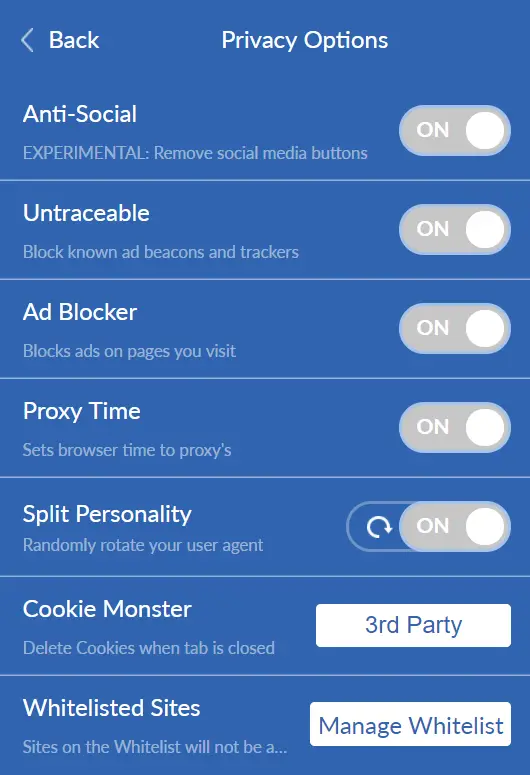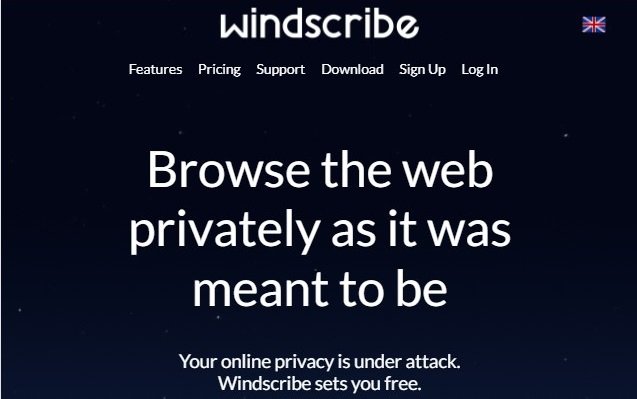
- #Windscribe vpn for chrome install#
- #Windscribe vpn for chrome driver#
- #Windscribe vpn for chrome full#
- #Windscribe vpn for chrome windows#
#Windscribe vpn for chrome windows#
" Even on a Windows platform with no admin rights, it is easy to use VPN."
#Windscribe vpn for chrome driver#
" After all these days, it is easy to boot a PC from a USB stick running a Linux OS or any other portable OS."ĭisable the USB sockets in the BIOS of the device, or remove the driver being used for USB sticks if the USB sockets are being used otherwise, e.g. Of course all IPsec ports are open, and I do not want to shut them down. Not as straight forward as I though it would be to use OpenDNS to block my kids from accessing dangerous sites.įYI here are the port forwarding rules on my router.
#Windscribe vpn for chrome install#
So it means that OpenDNS is trying to block repetitive requests, that surely have to do with the VPN trying to establish a tunnel.įinally all this boils down to: how can I prevent my kids from establishing a VPN connection? I don't want to disable VPN on ALL my house PCs, just my kids PC, and I want to keep things simple, without having to install anything on my kid's device (this is the beauty with my home router pointing to OpenDNS. After all, the domain that OpenDNS seems to block the most for me is the windscribe domain, and I don't connect myself to. However, I was hoping that during the establishment of the VPN tunnel, OpenDNS would detect connections to WindScribe servers/domains and block these attempts, therefore preventing the establishment of the tunnel. I agree that when the VPN tunnel is established, then there is nothing that OpenDNS can do, and the VPN uses its own DNS service. I do not have admin rights on my work laptop. I have chrome as a portable app, with the windscribe extension, when I use it on my company laptop, I can connect the WindScribe VPN through its Chrome extension, without problem form the office. After all these days, it is easy to boot a PC from a USB stick running a Linux OS or any other portable OS.Įven on a Windows platform with no admin rights, it is easy to use VPN. However, is revoking Admin Rights enough? No. You give very good advice that admin rights should never be given on the kids's device. Thanks a lot for your answer that helps me understand better how this whole thing works. You may need to think and apply other methods too. And last but not least: not everything in life can be solved by technical measures. They can cover only the DNS side of things. A DNS service like OpenDNS is not able to do all of this for you.
#Windscribe vpn for chrome full#
Search the internet for such measures, it is full of suggestions. Further, block the usual VPN ports and protocols (often UDP) and maybe also IP address ranges with outgoing firewall rules on the router. This measure will prevent him/her to install most circumvention tools and also prevent him/her from changing the network settings.

Start with providing your child with a regular user account, never with an admin account. " And how can I know which VPN my kid is using?" Read more about what DNS is to understand the technical background. A DNS service cannot block apps, devices, images, videos, cars or boats. " what use is OpenDNS parental controls?"Īs supposed, it blocks access to domains as a recursive DNS service can. This is not a backdoor, but intended and normal behaviour of a VPN connection. " So OpenDNS is detecting windscribe, however WindScribe might have a backdoor because I could manage with the VPN service to find my way to sites normally filtered out by OpenDNS."Īs soon as a VPN connection is established, the VPN uses its own DNS, not the DNS you configured (OpenDNS). The WindScribe domains may have been queried for other record types like TXT, SRV and the likes. Also, OpenDNS just blocks A and AAAA records, not any other record types.

If you checked the Proxy/Anonymizer category, then domains being categorized this way are being blocked by OpenDNS. No, again, OpenDNS blocks domains only, not anything else.

" I thought that checking "proxy / anonymizer" in OpenDNS would exactly do this - stop the use of VPN."


 0 kommentar(er)
0 kommentar(er)
